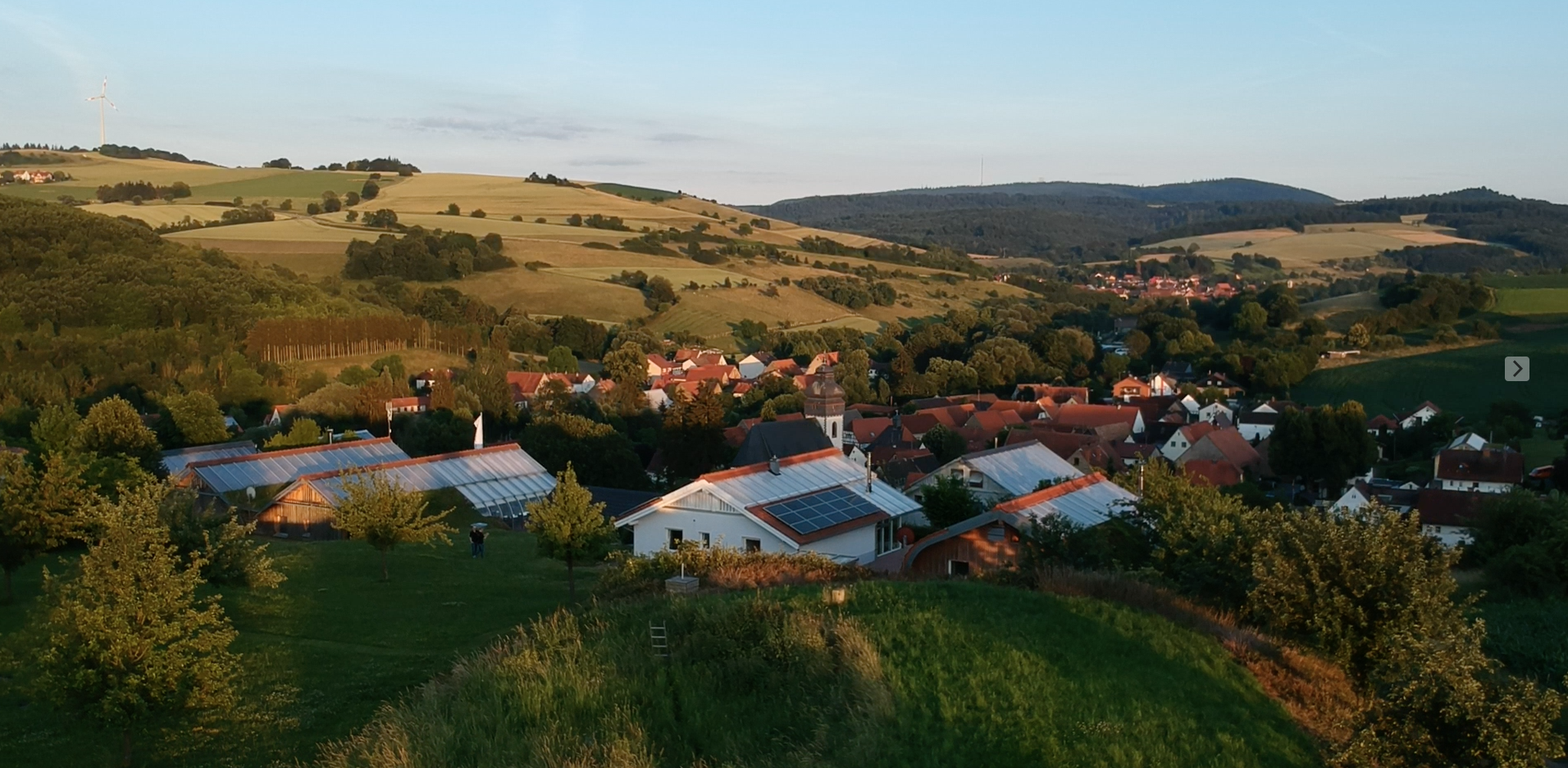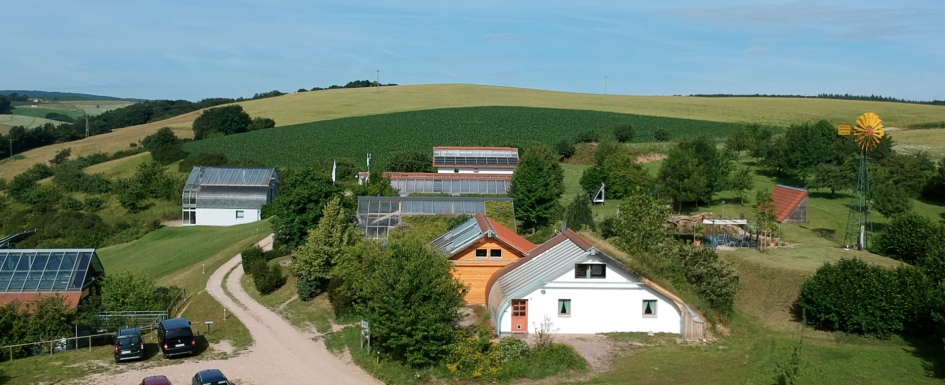
In June 2018 I visited the Sonnenpark, a Bio Solar House development in South West Germany. Bio Solar Houses are highly energy efficient, yet also simple, not relying on excessive technology.
A Bio Solar House is a house within a house. The inner house is highly insulated, while the outer one is largely glazed. The outer house traps the sun’s energy as heat, like a greenhouse, and keeps the inner house warm.
The space between the inner and outer house is mainly not seen, except in the ‘winter garden’. Here, the space expands to form a glazed living area. The winter garden also houses a biomass stove, which is used to heat water. Water is an excellent heat store, so Bio Solar Houses have a large hot water tank of 1200 litres – more than four times the size of a standard domestic cylinder.
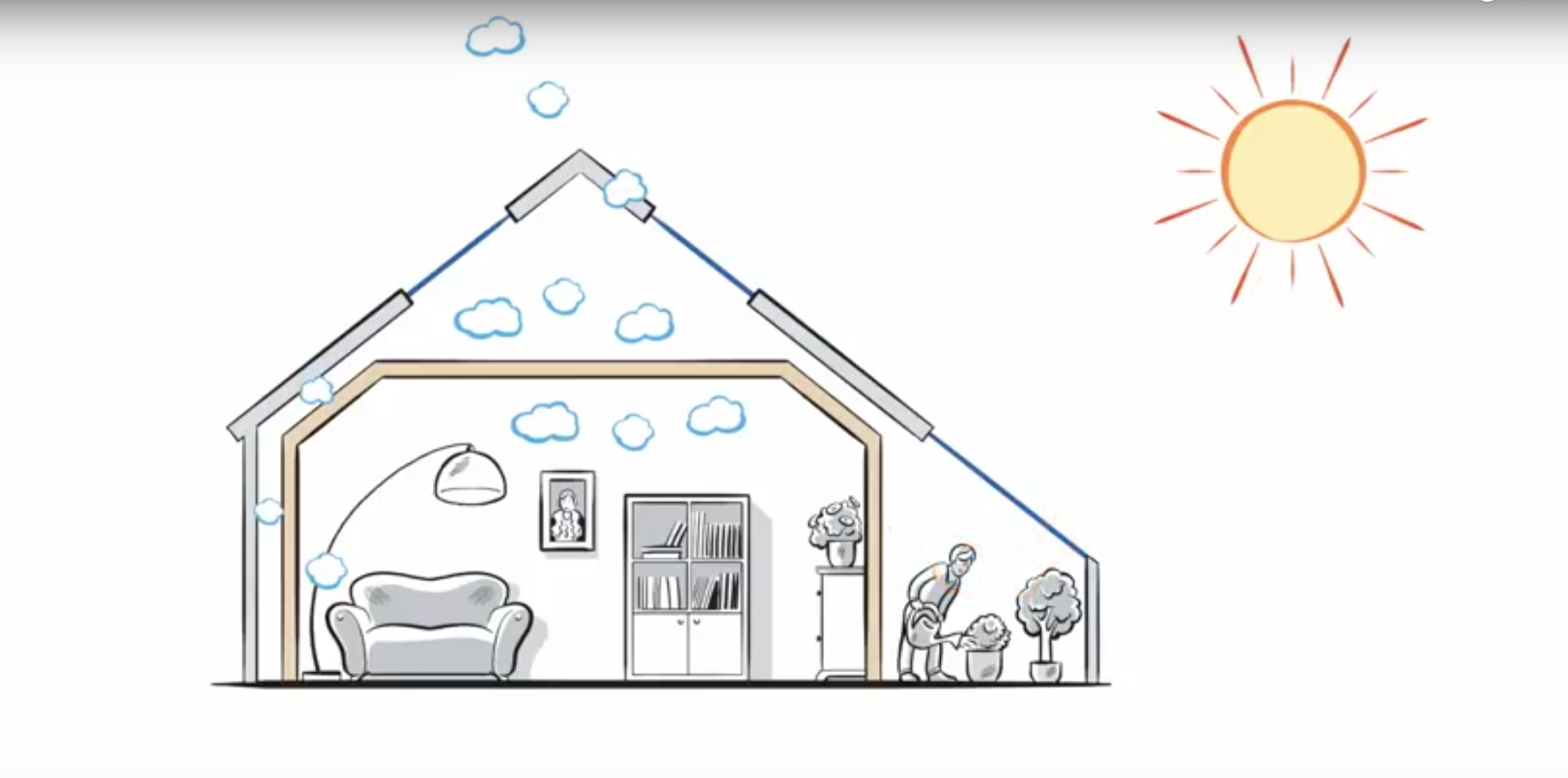
This water is also heated in two ways by the sun: directly, with water pipes running through solar thermal collectors in the roof, and by electricity from photovoltaic cells. Wind generated electricity is also used.
Staying in a Bio Solar House
The Bio Solar House company encourages people to stay in their example houses, at the Sonnenpark in Southwest Germany. Their philosophy is that one would not buy a car without test driving it; the same should be true with a house.
These buildings are intended to be a healthy living environment. Wall-based heating means that dust settling on the floor is not constantly lifted by warm air currents – unlike in buildings with under-floor heating. This is to reduce respiratory symptoms caused by breathing in dust.

Even experiencing a Bio-Solar House during warm June weather, I found it very liveable. Despite the extensive outer house glazing, the rooms were not too hot. This does rely on occupants keeping windows shut during hot weather, and opening them at night to let cooler air in. The thick insulation, and solar shading in the winter garden help prevent daytime heat from entering. Meanwhile, the outer house is well ventilated and this allows excess solar gain to disperse.
Breathable Structure
Importantly, the house within a house design means that the walls of the inner house can be breathable. Natural building materials and insulation are used, as these allow moisture to move freely to the outside. This prevents damp collecting and mould growth: important for the health of the structure and of the occupants.
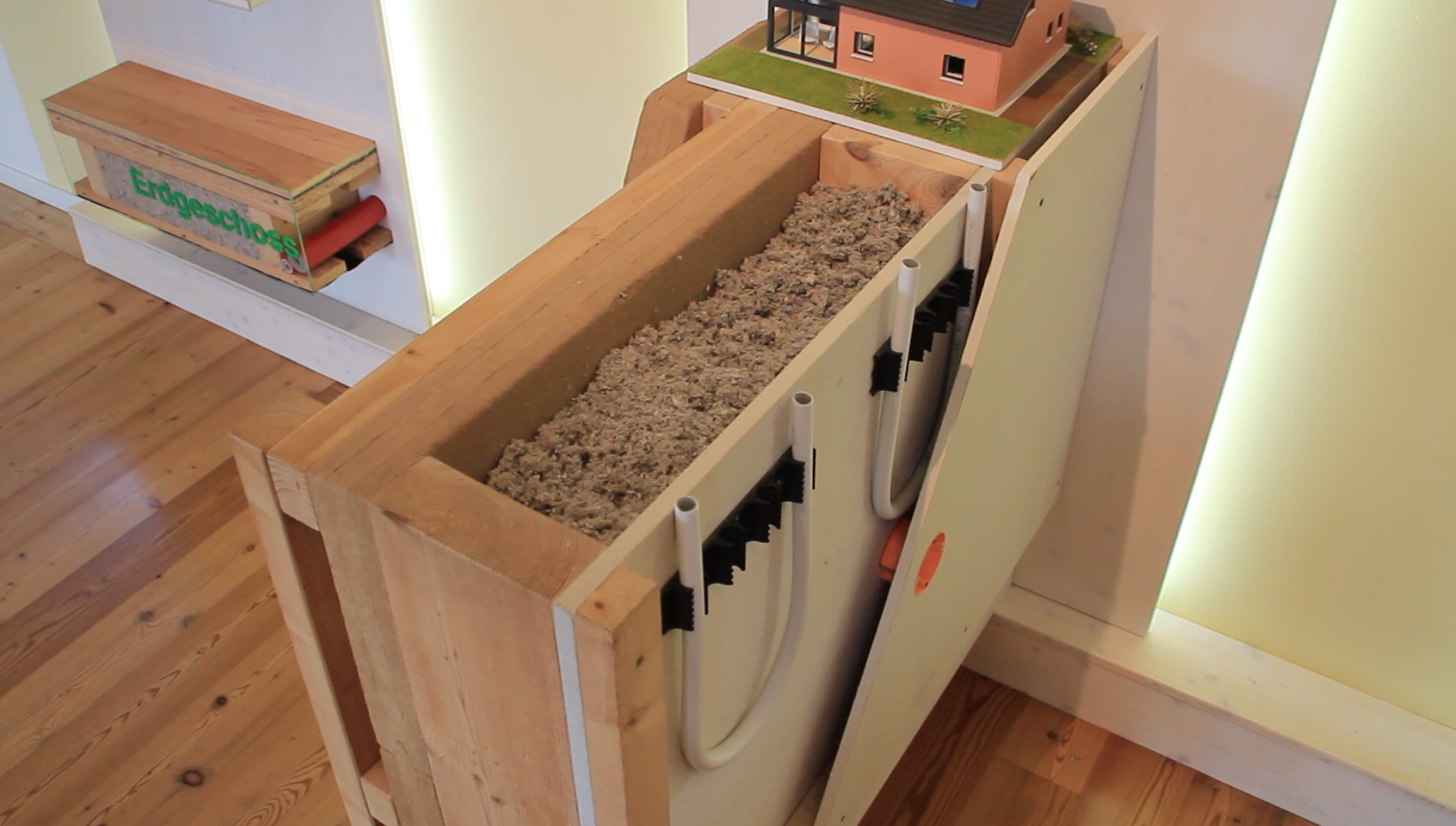
Despite being breathable, a Bio Solar House does not lose excessive heat, as the outer house shelters it within a warm environment. Therefore, unlike a Passive House, a Bio Solar House does not need to be especially airtight. There is no need for air tightness membranes and tape, which are time consuming to install, increase building costs and are vulnerable to breaching.
Personally, I found this breathable living space pleasanter than an airtight, mechanically ventilated Passive House, where one can feel stifled.
Technical Performance
The company quotes the annual energy requirement for heating a Bio Solar House as 10-25 kWh per metre squared of floor space. This is a similar energy efficiency to a Passive House, in which the maximum annual space heating and cooling demand is 15 kWh/m². Both of these compare extremely well to the average heating requirement in the UK’s existing housing stock, which averages approximately 200 kWh/m².
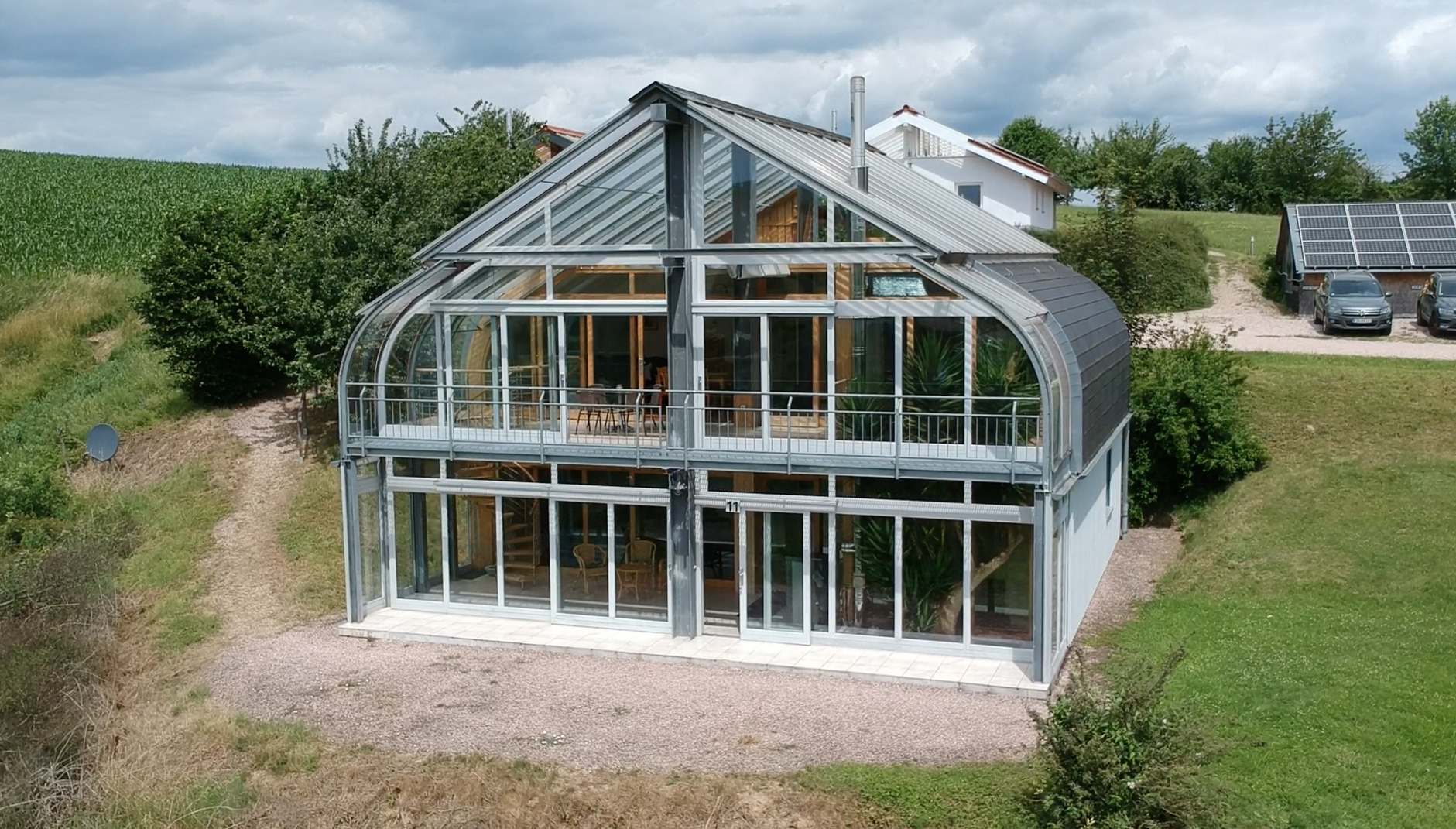
Building Options
Clients in Germany can choose between a range of options, from self build kits through to fully fitted-out ‘turn key’ options. Clients elsewhere can only obtain a Bio Solar House as a kit. The Sonnenpark does house an education centre, where prospective self builders can learn how a Bio Solar House works, and how to assemble it.
Final Thoughts
Like a Passive House, these buildings are impressively energy efficient. Even better, the design requires the use of natural, low embodied carbon materials, for their breathability. The breathability avoids the need for technology such as an MVHR, and the concomitant risks of equipment failure. The Bio Solar House in which I stayed was a spacious, light-filled home. Not a compromise, but a healthy and comfortable place for modern living.
